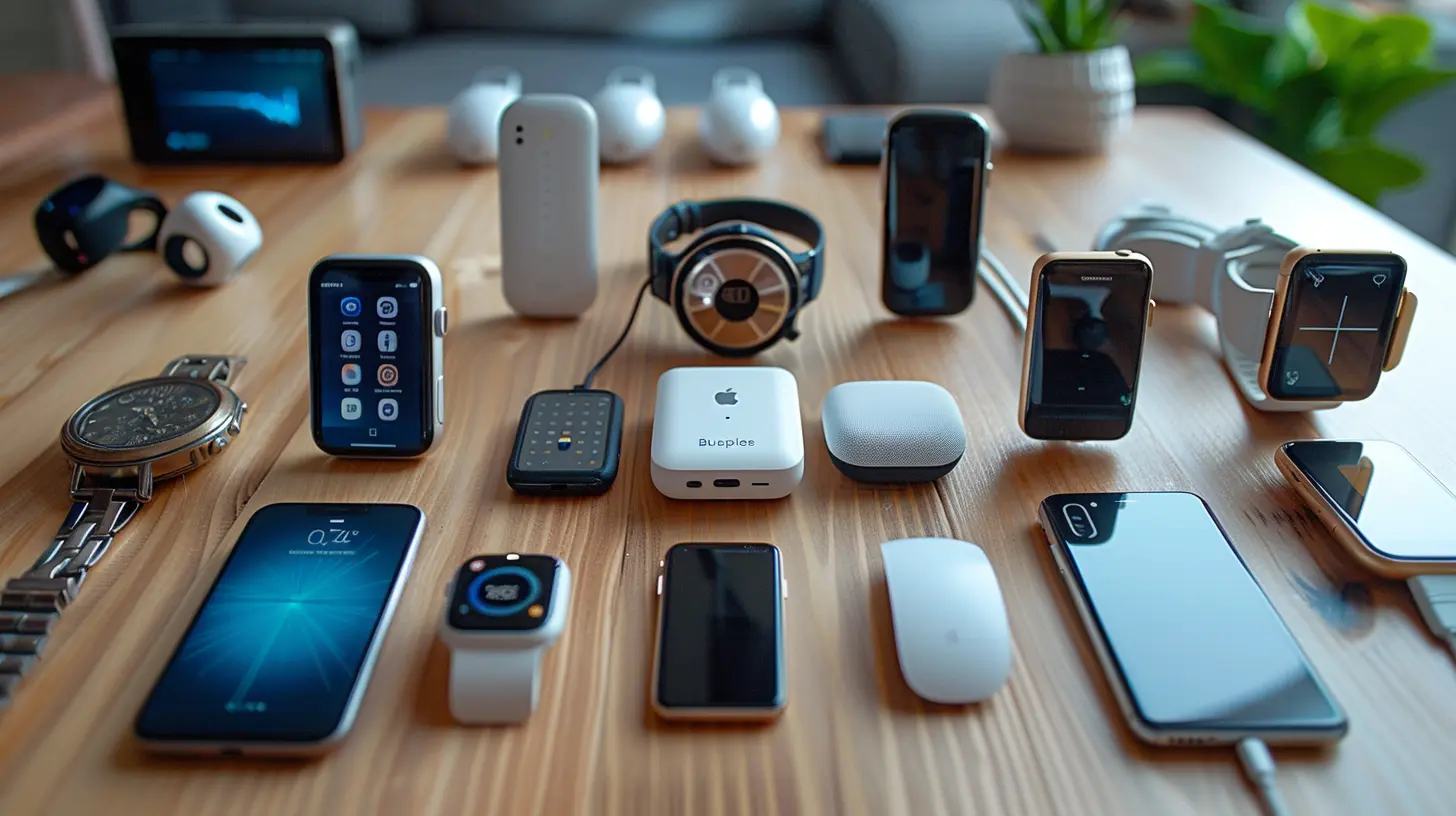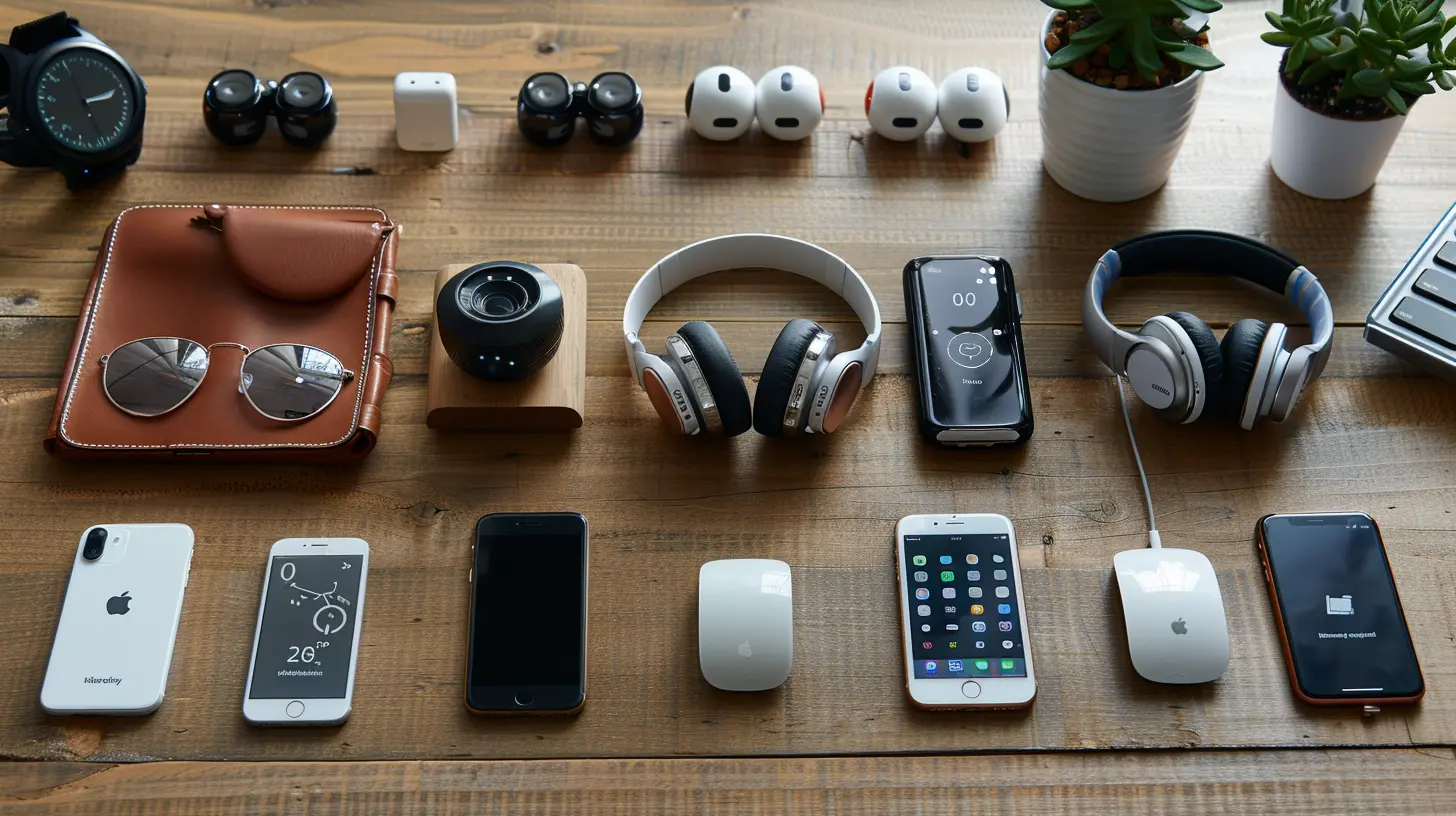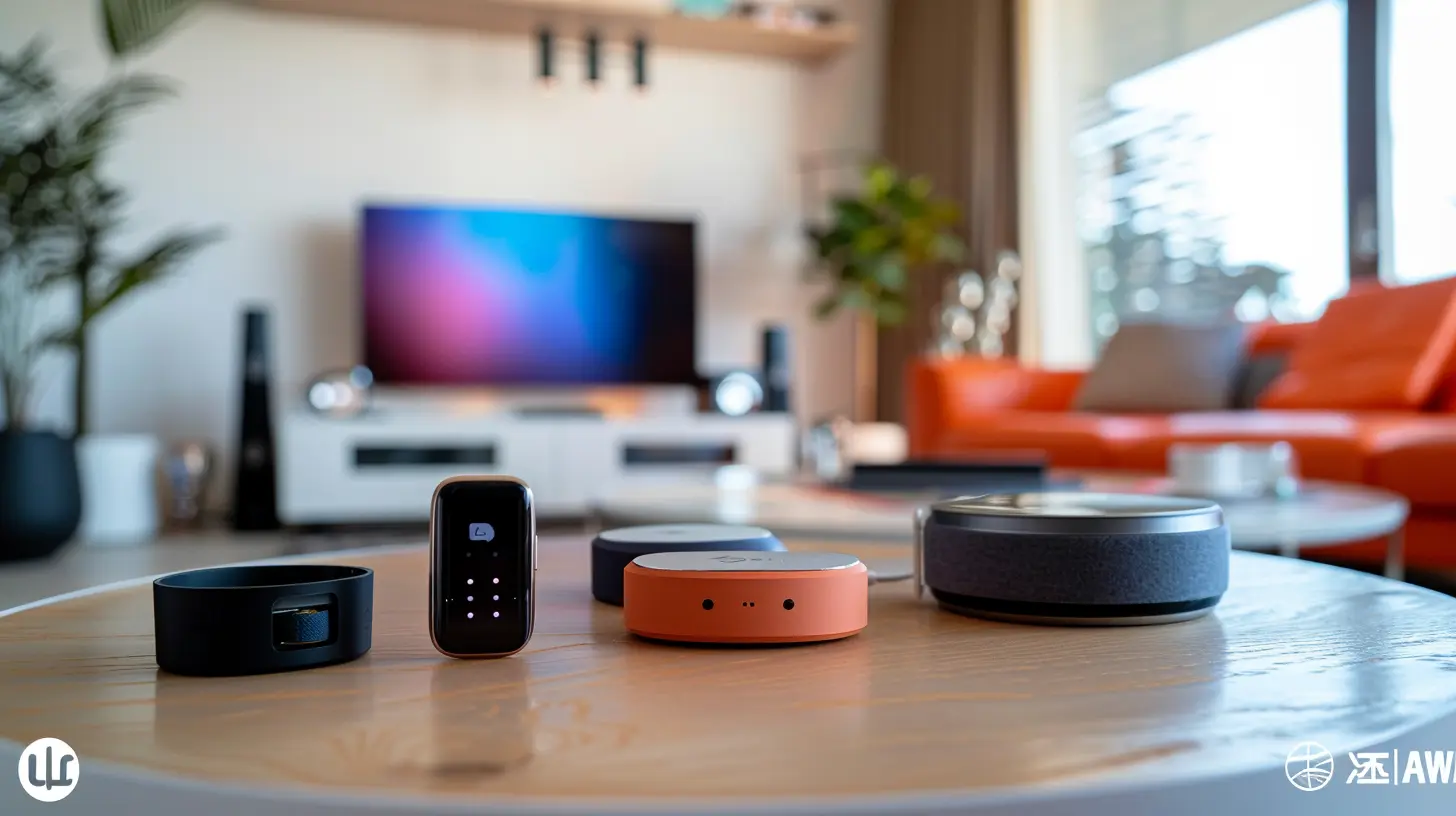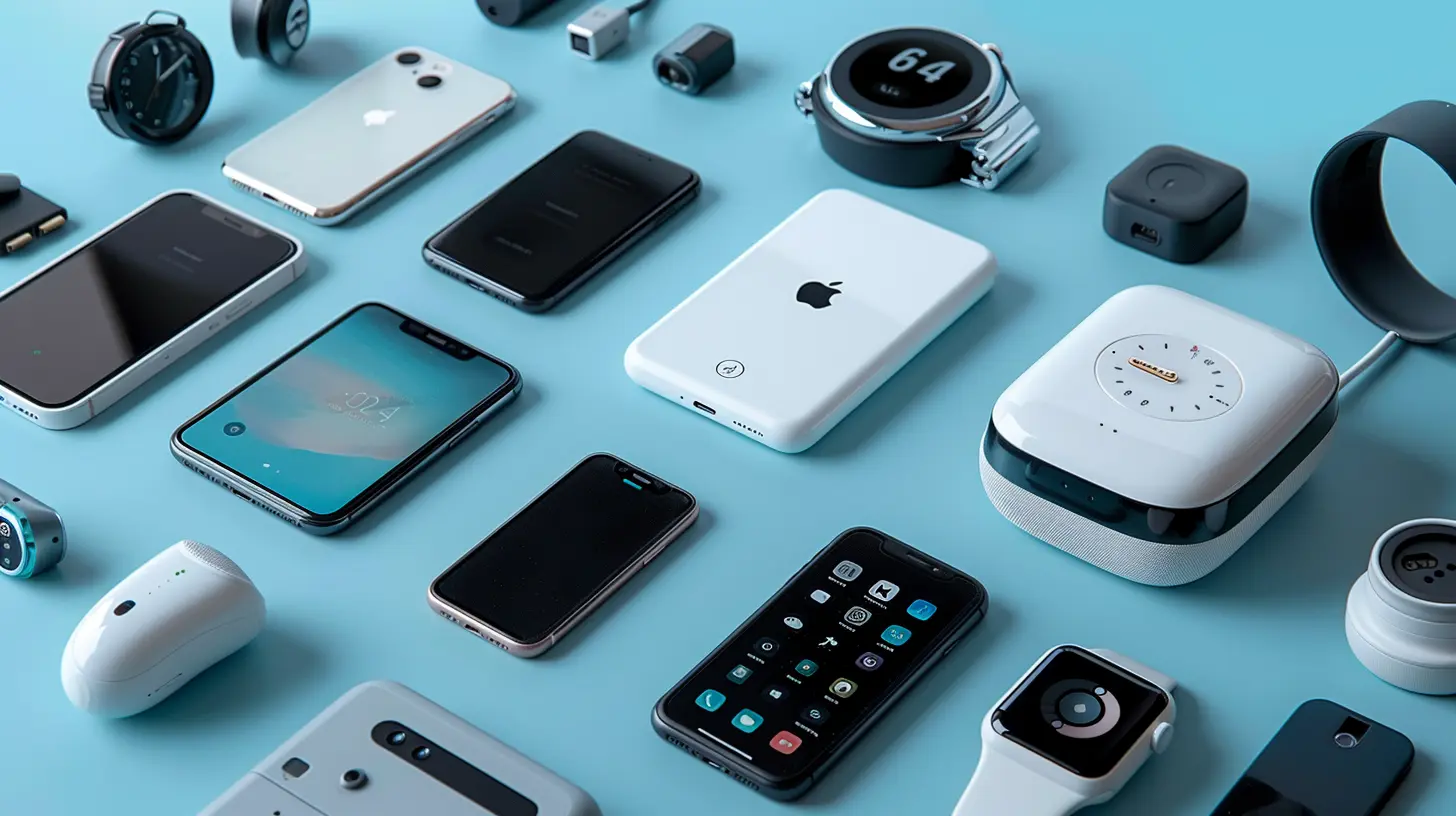The Role of Bluetooth in the Internet of Things
3 October 2025
Bluetooth. You know it, you love it, and if you're like most people, you're using it daily without even thinking about it. From wireless earbuds to smart home devices, Bluetooth has quietly become the glue holding the Internet of Things (IoT) together. But how exactly does this trusty technology fit into the grand IoT puzzle?
Let’s break it down in a way that even your grandma would understand (and maybe even impress her in the process). 
What is Bluetooth, and Why Should You Care?
Before we get into the nitty-gritty, let's take a step back. Bluetooth is a short-range wireless technology that enables devices to communicate without a mess of tangled wires. You've probably used it to connect your phone to your car, your smartwatch to your fitness app, or your headphones to your favorite playlist.But here’s the kicker—Bluetooth isn’t just a convenience; it’s a game-changer for IoT. Why? Because IoT is all about connectivity, and Bluetooth is one of the easiest, most energy-efficient ways to make that happen. 
The Internet of Things: A Quick Reality Check
The Internet of Things sounds futuristic, but it’s already woven into our daily lives. Simply put, IoT refers to the massive network of connected devices that "talk" to each other, gather data, and make automated decisions. Think smart thermostats adjusting your home temperature, fitness trackers monitoring your health, or even refrigerators reminding you to buy milk.Without wireless communication, IoT would be an unorganized mess of isolated gadgets. And guess who steps in as the ultimate wingman? That’s right—Bluetooth. 
Why Bluetooth is the Backbone of IoT
Sure, there are other wireless technologies like Wi-Fi and Zigbee, but Bluetooth brings some serious advantages that make it a top pick for IoT applications.1. Low Power Consumption
Nobody wants to charge their devices every five minutes. Bluetooth Low Energy (BLE) is designed specifically for energy-efficient communication, allowing smart devices to function for months (or even years) on a single charge. It's pretty much the superhero of battery life.2. Universal Compatibility
Bluetooth is like the social butterfly of wireless tech. It plays well with almost every smartphone, tablet, and smart gadget out there. This widespread compatibility means IoT devices can seamlessly connect without the hassle of special hubs or complex configurations.3. Cost-Effective
Let’s be honest—no one wants to break the bank setting up their smart home or smartwatch. Bluetooth modules are relatively cheap, making them an affordable option for manufacturers and consumers alike. This affordability has fueled the explosion of IoT gadgets in the first place.4. Secure Communication
With all this device-to-device talking, security is a major concern. Thankfully, Bluetooth offers encryption and secure pairing methods to keep hackers from eavesdropping on your smart home devices. (Because no one wants their smart fridge getting hacked—imagine the culinary chaos!)5. Mesh Networking Capabilities
Bluetooth Mesh allows multiple devices to communicate over a network, creating a web of interconnected smart devices. Think of it like a game of telephone, but without the message getting scrambled. This makes Bluetooth ideal for smart homes, industrial automation, and large-scale IoT networks.
Real-World Applications of Bluetooth in IoT
Now that we’ve hyped up Bluetooth’s capabilities, let's see how it’s actually used in the real world. Spoiler alert: it’s everywhere.1. Smart Homes
Your Alexa-enabled speaker, smart locks, and Bluetooth light bulbs? Yep, they're all talking to each other using Bluetooth. This technology allows homeowners to control their entire home from a single smartphone app. Lights, security systems, temperature controls—you name it.2. Wearable Tech
Fitness trackers, smartwatches, and even smart rings rely on Bluetooth to send real-time data to your phone. Whether you're counting steps, tracking heart rate, or monitoring sleep patterns, it's all thanks to Bluetooth doing its thing in the background.3. Healthcare and Medical Devices
From glucose monitors for diabetics to smart pill dispensers, Bluetooth has made healthcare more accessible and efficient. Doctors can monitor patients remotely, and individuals can track their health stats with ease.4. Smart Cities
Traffic lights, parking meters, and even streetlights are getting smarter with Bluetooth. Imagine a world where your phone tells you where the nearest available parking spot is or where traffic congestion is heaviest—all made possible by IoT-powered Bluetooth networks.5. Industrial IoT (IIoT)
Factories and warehouses are using Bluetooth to monitor machinery, track inventory, and even streamline maintenance schedules. By automating processes, businesses can improve efficiency and cut costs—basically, making everything run like a well-oiled machine.Challenges and Limitations
Of course, Bluetooth isn’t perfect. It has its fair share of quirks that need addressing:- Limited Range: Bluetooth typically operates within 10-100 meters, which is great for personal devices but not ideal for long-range IoT applications.
- Interference Issues: With so many Bluetooth devices out there, signal interference can sometimes be a problem, especially in crowded environments.
- Security Concerns: While Bluetooth offers encryption, vulnerabilities still exist. Strong authentication and regular updates are necessary to keep devices protected.
Despite these challenges, Bluetooth continues to evolve, with newer versions improving range, speed, and security.
The Future of Bluetooth in IoT
So what’s next for Bluetooth in the IoT revolution?Expect improvements in Bluetooth 5.4 and beyond, with enhanced range, faster data transfer rates, and better security. We’re also seeing an increased focus on Bluetooth in smart agriculture, smart cities, and even autonomous vehicles.
With the explosion of IoT devices, Bluetooth is destined to keep evolving, making our lives more connected, efficient, and—let’s face it—a little cooler.
Wrapping It Up
Bluetooth might have started as a simple way to connect your phone to a headset, but today, it dominates the world of IoT. With its low power consumption, affordability, and universal compatibility, it’s shaping the future of smart homes, healthcare, and even entire cities.So, next time you turn on your Bluetooth speaker or sync your smartwatch, take a second to appreciate the tiny, invisible waves of connectivity working behind the scenes. Because without Bluetooth, the Internet of Things just wouldn’t be the same.
all images in this post were generated using AI tools
Category:
Bluetooth DevicesAuthor:

Reese McQuillan
Discussion
rate this article
1 comments
Misty McSweeney
Bluetooth is essential for IoT, enabling seamless device connectivity and communication. Its low power consumption and range make it ideal for smart home devices and wearables.
October 4, 2025 at 12:00 PM

Reese McQuillan
Thank you for highlighting Bluetooth's crucial role in IoT! Its low power consumption and effective range indeed make it a key technology for smart devices.


